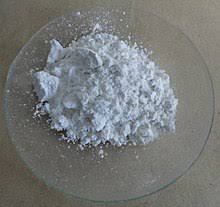
10 Uses of Calcium Oxide in Daily Life
Calcium oxide, commonly known as quicklime, is a versatile chemical compound with a wide range of applications across various industries. Derived from limestone, it is a white, caustic, alkaline substance that has been used for centuries in both industrial and everyday applications. In this article, we explore 10 common uses of calcium oxide in daily life and how this humble compound plays an essential role in many processes.
1. Water Treatment and Purification
One of the most important uses of calcium oxide is in water treatment. When calcium oxide is added to water, it forms calcium hydroxide (slaked lime), which helps to purify drinking water. This process, known as lime softening, is commonly used in municipal water treatment plants to remove impurities, heavy metals, and excess hardness from water. It also aids in the removal of bacteria and organic matter, making water safer for consumption.
- Daily Life Application: The water we drink is often treated with calcium oxide to ensure it is clean and safe.
2. Construction Industry: Cement and Mortar
Calcium oxide is a key ingredient in the production of cement and mortar, which are used in building and construction. It is used to create calcium silicate compounds, which give concrete its strength and durability. Quicklime is also added to lime mortar, a traditional building material that binds stones and bricks together.
- Daily Life Application: Calcium oxide is indirectly present in the construction of homes, buildings, roads, and infrastructure that we use daily.
3. Soil Amendment in Agriculture
Calcium oxide is used in agriculture to improve soil quality. When added to acidic soils, it neutralizes the pH levels, making the soil more alkaline and suitable for growing crops. This process is often called liming. By improving soil structure, it enhances nutrient availability and supports better plant growth.
- Daily Life Application: Calcium oxide is a part of many agricultural practices that ensure food crops grow more effectively and yield better results.
4. Manufacturing of Glass
Calcium oxide is a key component in the production of glass. It is used in combination with silica (sand) and soda ash to create various types of glass, including window panes, containers, and bottles. The addition of calcium oxide improves the strength, durability, and chemical resistance of the glass.
- Daily Life Application: Everyday glass products like windows, mirrors, and glass containers are made with calcium oxide.
5. Production of Lime-based Products
Lime-based products like limewash, whitewash, and lime plasters are widely used in home decoration and renovation. These products are made by mixing calcium oxide with water to create a paste that can be applied to walls and other surfaces. The paste hardens as it reacts with carbon dioxide in the air, forming a durable, alkaline coating.
- Daily Life Application: Calcium oxide-based products are often used to paint or preserve buildings and other structures around us.
6. Neutralizing Acids in Chemical Processes
Calcium oxide is used as a neutralizing agent in various industrial processes. It is used to neutralize acidic compounds and to control the pH in chemical reactions. In some cases, it is also used in acid treatment to neutralize waste products and prevent environmental contamination.
- Daily Life Application: Chemical processes in industries such as paper manufacturing, steel production, and oil refining use calcium oxide to neutralize harmful acids.
7. Production of Hydrogen and Oxygen
Calcium oxide is used in the production of hydrogen gas through a chemical reaction involving water vapor. The compound is also used in some oxygen-generating systems. In industrial settings, calcium oxide reacts with water or other compounds to release gases like hydrogen or oxygen, which are vital for various applications, including fuel cells and other energy systems.
- Daily Life Application: The hydrogen or oxygen generated through calcium oxide may be used in technologies like fuel cells, which are increasingly being incorporated into clean energy solutions.
8. Food Preservation and Processing
Calcium oxide, in the form of calcium hydroxide, is used in the food industry to preserve certain foods, particularly in the processing of fruits and vegetables. It is used in pickling, as well as in the production of tortillas, where it is added to the corn to improve texture and nutritional content in a process known as nixtamalization.
- Daily Life Application: Calcium oxide is found in many processed foods like pickles, tortillas, and processed fruits that are part of our everyday diet.
9. Deodorization and Odor Control
Calcium oxide is used in deodorizing applications, particularly in odor control for waste management and sewage treatment. It can neutralize sulfur compounds and other odor-causing substances, improving air quality in industrial or commercial settings. It is also used in odor-absorbing products like litter boxes and bathroom deodorants.
- Daily Life Application: Many everyday products, such as odor-eliminating powders and deodorizing agents for homes, may contain calcium oxide.
10. Industrial Waste Treatment
In industries, calcium oxide is used for waste management to treat hazardous chemicals and neutralize industrial waste. It is particularly effective in neutralizing sulfur dioxide (SO2) and other acidic pollutants produced during industrial combustion processes. The use of calcium oxide in these processes helps reduce the environmental impact of various industrial operations.
- Daily Life Application: The use of calcium oxide in waste management ensures that we live in cleaner environments by reducing harmful emissions.
Conclusion
Calcium oxide plays a vital role in numerous industries and everyday products. From its importance in water treatment, agriculture, and construction to its uses in food processing, deodorization, and industrial waste treatment, calcium oxide impacts various aspects of our daily lives. As an essential industrial chemical, it continues to contribute to sustainability, clean energy, and environmental preservation, making it a key element in modern society.
